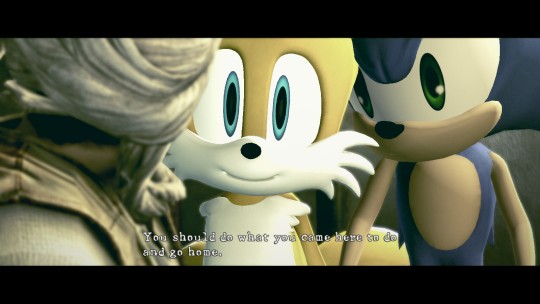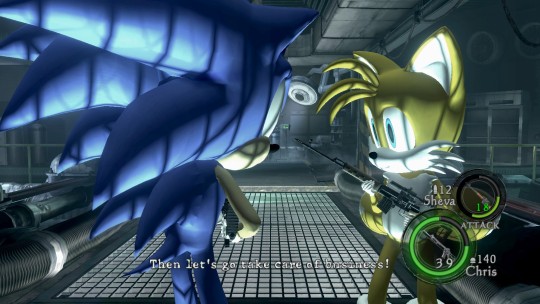#if you ever play this game i hope you do it co-op it's much funnier
Text







i love mods, aka i miss my wife tails
#i'll always come back to resident evil 5 mercenaries mode but the ai definitely got dumber#somehow#if you ever play this game i hope you do it co-op it's much funnier#resident evil 5#albert wesker#jill valentine#sonic#tails#ft that one poor bastard who gets axed#took me one hundred years to realise that roger craig smith voiced both chris and sonic#resident evil#re#re5#tw guns
87 notes
·
View notes
Text
Weekend Top Ten #586
Top Ten Lego Games
Ah, Lego. It’s great. I love Lego. And it feels almost a natural fit for videogames; simple, freeform construction with regular polygonal shapes. Funny, then, that the most popular and successful Lego videogames are, essentially, third-person comedy-action adventures where the actual process of building Lego is an adjunct.
Yes, the series of games by Traveller’s Tales (aka TT Games) is long-running – nearly twenty years old, my goodness – and is something of a holy text in our house. Ever since the first game – the Revenge of the Sith tie-in Lego Star Wars: The Video Game in 2005 – I’ve been hooked. I remember playing that and being flabbergasted by how fun it was; how delightful the central gameplay hook was, and also how much daft humour it wrung out of the Star Wars licence. And, for the most part, things have only gotten better from there.
There’s something inherently innocent but also faintly ridiculous about Lego. As such, once you render a famous character as a minifig – whether it’s Darth Vader or Indiana Jones, Aragorn or Batman – it instantly feels like something of a parody. I think this allows the talented developers to lean into a franchise’s giddiness and silliness, to find the inherent absurdities that all long-running and popular storylines possess. And I’ll tell you what, they do it so well. One of the disappointing things for me with the Lego Batman Movie was how first-base and obvious its Batman-related jokes were; in three different Lego Batman games, they’ve always managed to get deep-cut nerd gaggery out there, and more nuanced and – frankly – funnier takes on the source material. These are games that are, on the one hand, surface-level comedy – slapstick pratfalls, animal antics, characters’ heads on the wrong way round – but also humorous love letters on behalf of fans, referencing obscure elements of history and one-off random bits of lore. The ability to unlock characters such as Bat-Cow, for instance; where the hell did that come from, other than an adoration of the more sublime aspects of a franchise?
Coupled with that is the core gameplay loop. The games are relatively easy if you don’t mind dying a lot; you can sort of just brute force your way to the end of a level. But there’s something so enjoyable about the way the combat works, right from the off; the satisfying sound effects of scenery exploding into a shower of Lego studs. And then there’s the many differing objectives; secrets to unlock, minikits to discover, perfections to attain, to say nothing of a great use of achievements (killing Jar Jar; having Human Torch and Captain America on the same team). Again, the love and care is evident.
And – and! – these are perfect games for playing with little kids. They’re forgiving, they’re fun, they work great in co-op, and they star a host of child-friendly characters dressed as Lego. It’s arguable, sadly, that the golden age of Lego games has passed; they managed to release a game every year from 2005 to 2019, but after last year’s Skywalker Saga it doesn’t look like there’s another game imminent. This is a shame, because the franchise is so good as “my first game”; a new generation of nippers deserves the pleasure of getting Jimmy Olsen to beat Steppenwolf to death on the moon.
(Fun fact: I don’t actually know if either Jimmy or Steppenwolf are playable characters in any of the DC-based games. But you can go to the moon)
Anyway, the series is terrific, and I hope it does continue. I’d like another Lego Marvel and Lego DC title; one that combined the expansive nature and improved combat of Skywalker Saga with the tighter level design and simpler structure of some of the earlier titles. And now that Hasbro and Lego have joined forces with the excellent Lego Optimus set, a Transformers themed title would be awesome. But really the most obvious franchise to get the Lego treatment is surely Star Trek; sixty years of stories, multiple different casts, a plethora of costumes, and a host of inorganic sets and locations that lend themselves to simple Lego-esque shapes. Come on, you know you want to!

Lego Marvel Super Heroes (2013): the platonic ideal of TT’s Lego games. The Marvel cast lends itself not only to the collectible character-fest of Lego games; but their colourful depictions and – generally speaking – moderate power set means it doesn’t stray too far from the template established by Star Wars. The central hub of New York – a Marvel mainstay – perfectly threads the needle between pseudo-realistic open world city and quirky, funny, Lego town. But the missions themselves remain discrete and focused, recognisable as core “levels” and distinct from the hub city with its side-quests and secrets. It may be showing its age a little but it still has all the elements in the best possible order.
Lego Star Wars: The Skywalker Saga (2022): returning to the origins of the franchise is a good move, and the already bulging Star Wars cast is further bolstered with characters from the newer films and shows. The open galaxy structure of the game is expansive and mostly very rewarding; it’s great fun to jet off from Tatooine to Hoth and run around collecting stuff. Gameplay and graphics improvements are very welcome, but there is a slightly wonky nature to a lot of the missions, which blur too much into the open-world gameplay and often too simplistic or repetitive. Marrying the open galaxy approach with more discrete and separate missions could have made it the best Lego yet.
Lego Batman 3: Beyond Gotham (2014): the DC universe is just as jam-packed with fun and colourful characters as Marvel, even if the often extensive powersets of, say, Superman and Wonder Woman don’t translate quite as neatly to the formula as Iron Man and Captain America. Despite all that, we still have a tremendous game with really strong missions and a host of different smaller hub worlds spread across the planets of the DC Universe. It’s fun to find secrets like a cow on the moon, and locations such as the Justice League Watchtower or the Batcave are incredibly well designed. Plus the secrets and nods to the comics are probably the best in the series’ history.
Lego Star Wars II: The Original Trilogy (2006): back to basics and the early days of the franchise here, but there’s something so pure and well-executed that it can’t be ignored. After the first Lego Star Wars, detailing the prequels, we went back to the classic trilogy and every aspect was refined. Controls and cameras tightened, graphics improved, missions more focused, and – it has to be said – better source material. The Mos Eisley Cantina hub is wonderful, becoming increasingly populated with characters as you unlock more and more. Yes, its structure feels simplistic nowadays, but perhaps this simplicity is also a strength.
Lego Dimensions (2015): a bold and daring experiment in the short-lived “toys to life” genre, one seemingly made for Lego. Outside of the amusing and entertaining (and, er, expensive) gimmick of being able to “connect” real Lego kits and characters to the game, it’s still a really cool journey through the Lego multiverse, as your mismatched team (including Gandalf, Batman, and Wyldstyle) bump into characters from properties as diverse as Ghostbusters and The Wizard of Oz. Sprawling and perhaps a tiny bit unfocused (its multiple worlds and modes can be confusing for kids), it earns so many points for the gag where The Doctor will regenerate into a different incarnation every time he dies.
Lego Marvel Super Heroes 2 (2017): the sequel to the greatest Lego game of all time does a lot of things right, but this is – I feel – where a bit of the bloat and confusion starts to creep in. by opening up the Marvel multiverse (a year before Spider-Verse came out, predating the whole multiverse boom!) we get some cool variants of classic characters and it does a good job showcasing the likes of Spider-Gwen and Squirrel Girl. But the open world, featuring a mishmash of alternate New Yorks (News York?) just isn’t as fun, and the divide between the casual exploration of the hubs and the individual missions is blurred. It’s just messier, basically.
Lego Batman: The Videogame (2008): like with Star Wars, we go back to basics for this fantastic entry. Shorn of the structure of adapting the Star Wars trilogies, this is an original story that skews Adam West in its levity but is pleasingly Animated Series in its aesthetic. Without quite so many hero characters to choose from, the use of alternate suits for Batman and Robin is inspired, creating a very satisfying puzzle element. And, of course, the Rogue’s Gallery is ideal for a game like this, especially with the nice hook that you get to play levels from the bad guys’ perspective too.
Lego Indiana Jones: The Original Adventures (2008): often maligned, I really liked this, and it’s one of the very (very) few games I’ve ever 100%-ed. Whilst the Indy characters aren’t as varied or colourful as others, the level design and gameplay mechanics made it feel more like an old-school action adventure as you pick up tools to solve puzzles along the way. It adapts the films’ set-pieces really well and the university hub is well-realised and full of secrets. Plus you get to be a Lego Sean Connery, what more do you want?
Lego Lord of the Rings (2012): one of the first Lego games to have a true open world about it, as you set off from the Shire on the adventure. Again we see the use of tools and different characters’ abilities as you progress, even if the roster is inevitably less varied or dynamic than with, say, Marvel. But the subject matter does suit the gameplay very well, and of course there’s a quirky sense of humour to Jackson’s films making the game’s silly jokes marry quite well. Feels like a good bridge between the more simplistically structured early games and the expansive open worlds of later years.
Lego Star Wars: The Video Game (2005): going back to where it all began with the very first Lego game, and one that genuinely blew me away. Seriously, I was surprised at just how good this was, because, well, who expected it? But TT were onto something right from the start. Yes, it’s very similar in structure to later, better games – especially it’s direct sequel. Yes, you could argue that both games can be sampled in the Complete Saga compilation. But there’s still loads to enjoy here. And yes, as should be obvious, I’ve not played one of the Harry Potter games. I’ve heard they’re pretty good though.
#top ten#games#videogames#lego#tt games#travellers tales#star wars#marvel#mcu#dc#indiana jones#lord of the rings
1 note
·
View note